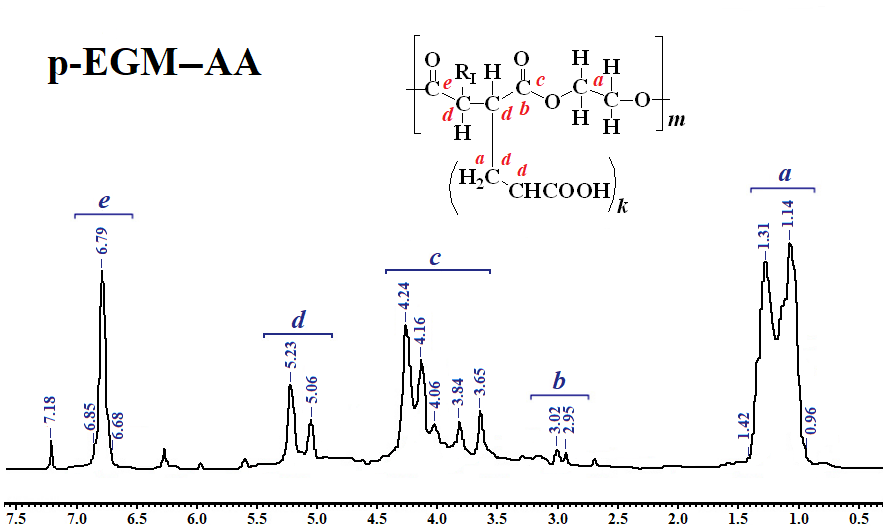Investigation of Physical and Chemical Properties of Thermosetting Copolymers of Polyethylene Glycol Maleate with Acrylic Acid During their ‘Cold’ Curing
DOI:
https://doi.org/10.31489/2959-0663/2-25-9Keywords:
unsaturated polyester, “cold” curing, density, viscosity, total volumetric shrinkage, hydrophobicity, thermosetting polymers, наливные изделияAbstract
The paper presents information on the study of physical and chemical properties of solutions of polyethylene glycol maleate in acrylic acid and products of their ‘cold’ curing. The weight-average molecular weight of the initial polyethylene glycol maleate was established using the GPC method. The value of the degree of unsaturation of both the initial unsaturated polyester and copolymers based on it was determined using the bromide-bromate method. The dynamic viscosity of the polymer-monomer mixture of polyester and acrylic acid was established using viscometry. The density of the stock solutions was analyzed using the pycnometric method and the density of the cured products was determined using the hydrostatic method. The total volume shrinkage of the copolymers was calculated from the obtained density values. The composition of the copolymers was analyzed/studied with the help of HPLC. The degree of swelling of the cured products was also calculated by gravimetric method, and their identification was carried out using IR- and 1Н NMR-spectroscopy. The surface topography of cured copolymers was investigated by SEM. The results obtained indicate to the possibility of controlling the properties of cured unsaturated polyester by varying the initial composition of polymer-monomer mixture depending on its purpose and obtaining on its basis the polymer matrix for the manufacture of bulk products with good physical and chemical properties.

Downloads
Published
How to Cite
Issue
Section
License
Copyright (c) 2024 Gulsym K. Burkeyeva, Anna K. Kovaleva , Danagul M. Muslimova, David Havlicek, Nurken M. Zhumabek, Nurlan A. Nukin

This work is licensed under a Creative Commons Attribution-NonCommercial-NoDerivatives 4.0 International License.
This work is licensed under a Creative Commons Attribution-NonCommercial-NoDerivatives 4.0 International License.
Authors retain copyright and grant the journal right of first publication with the work simultaneously licensed under a Creative Commons Attribution License (CC BY-NC-ND 4.0) that allows others to share the work with an acknowledgement of the work's authorship and initial publication in this journal.



